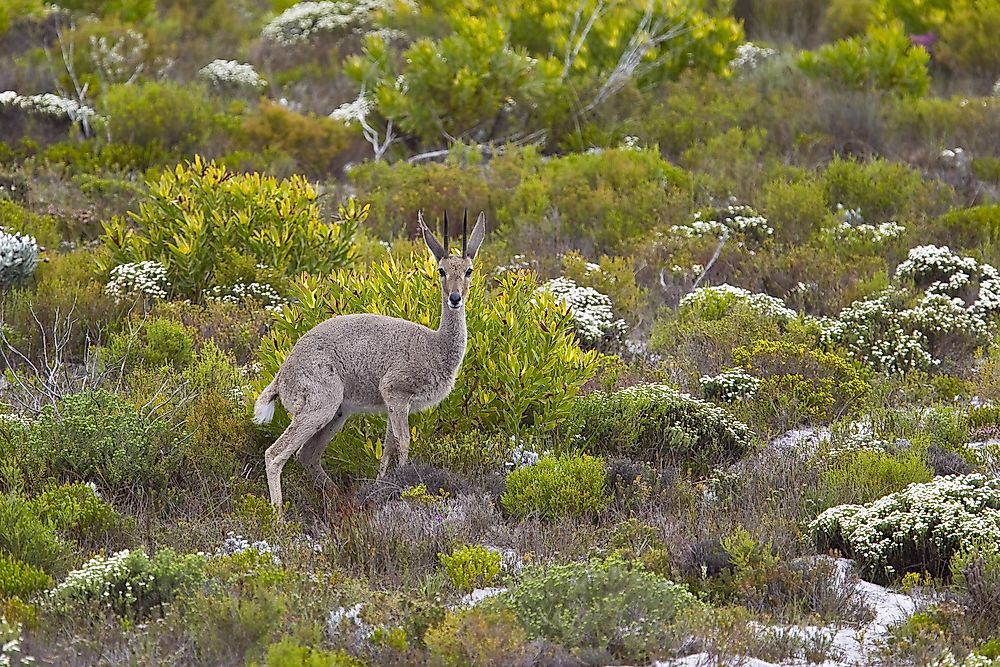Unique Species Of Africa: The Grey rhebok

The grey rhebok, which also goes by the name grey Rhebuck, is an antelope species indigenous to countries in the south of the African continent. The animal’s scientific name is Pelea Capreolus. The term Capreolus means “little goat” in Latin. The Afrikaans name for the grey rhebok is Vaalribbok, while another common name for the animal is Vaal rhebok or simply Rhebok.
Features of the Grey Rhebok
This antelope species is of medium size, weighing between 42 and 66 pounds in weight, and up to 31 inches in shoulder height. The animal comes has a long neck, a rounded nose, slender ears, and sharp horns that are straight in males with ringed bases and a length of up to 10 inches. The grey rhebok has a short, dense, wooly coat that has different grey shades.
Diet and Habitat
Grey rheboks occupy high regions in the southern part of Africa. These antelopes roam mountain slopes, rocky hills, grasslands in the plateau, and also appear at the Cape’s coast. Grey Rhebucks have woolly coats as an adaptation to the cold in the mountains. The animals mainly feed on forbs and shrubs, and between June and October, they also take up flowers, seeds, and roots. This antelope species mostly feeds in steep areas, although they use grass cover for shelter and hiding from predators. The animal is indigenous to Lesotho, South Africa, and Swaziland. The antelope species lives in some of the parks in South Africa including Cape Peninsula National Park, Madikwe National Park, and Addo Elephant National Park.
Behavior
Grey Rhebucks breed seasonally with mating being from January to April. The gestation period is approximately seven months, with births coming in late spring all the way to summer. The antelopes are polygynous forming herds with a mature male and up to 15 females together with the young ones. The animals are territorial marking their territory with urine and droppings. The male rheboks get very aggressive throughout the breeding season and will fight off intruders in their area. Grey rheboks snort, hiss, and groan. They are most active during the day before it gets hot. The animals are quick runners attaining speeds close to 37 miles per hour in mountainous regions. Their life expectancy falls between eight and ten years.
Population
The IUCN Red List of Threatened Species classifies the grey rhebok as near threatened. The current population trend of the animal is decreasing with mature rheboks declining continually. In protected areas, the population is about 2,000 with around 18,000 being in unprotected areas. Significant threats to the species include illegal hunting using dogs and natural predators. Grey rheboks are prey to hyenas, leopards, jackals, lions, pythons, and Cape hunting dogs. Climate change and encroachment by humans into the natural habitat of have contributed to the decline in the population, as well as increased poaching.
Facts About the Grey Rhebok
Every year trophy hunters kill about 100 grey rheboks with trophies fetching a price of $900 - $1,400 in both local and international markets. The British sportswear company, Reebok, borrows the Dutch spelling of the antelope’s name for a mature male, “Rhebok.”











